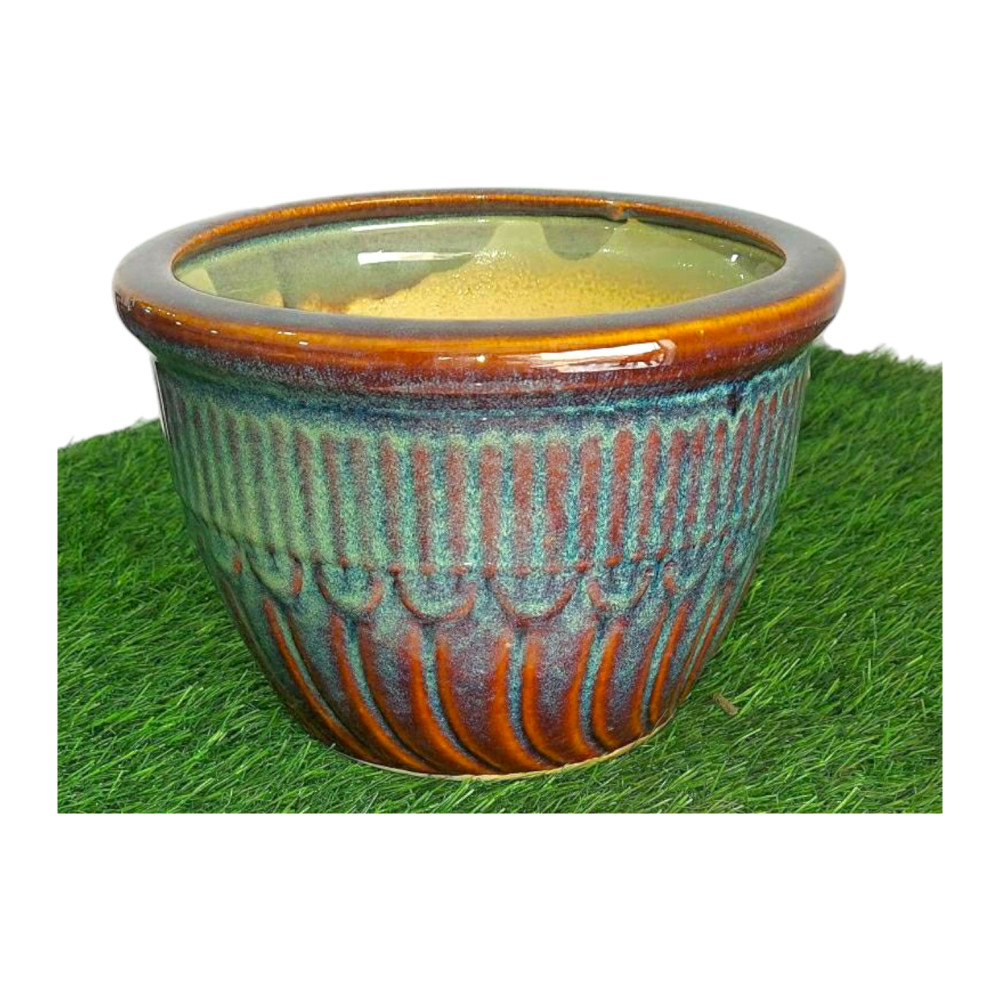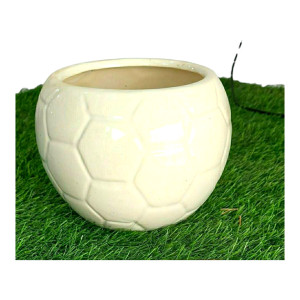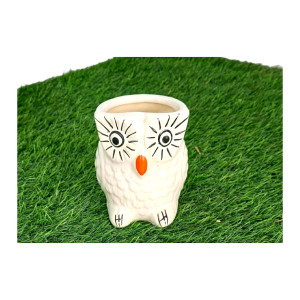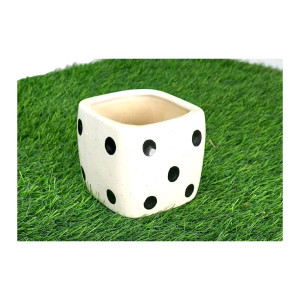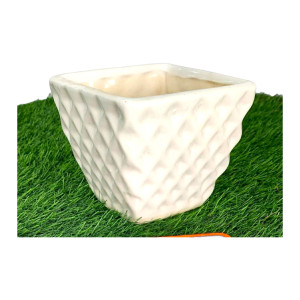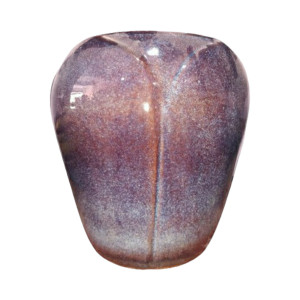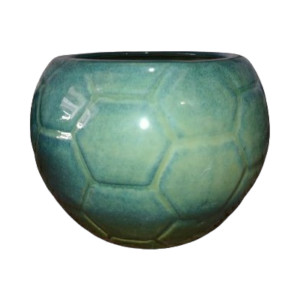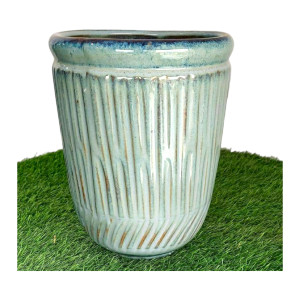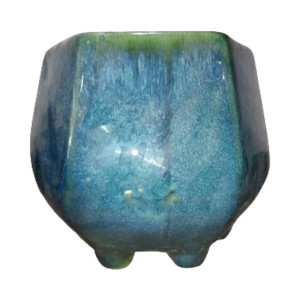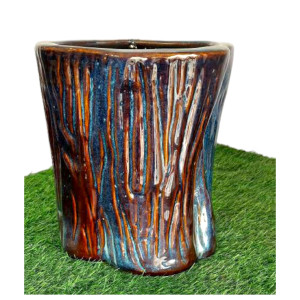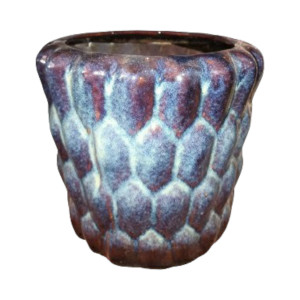Ceramic Planter in Maroon Colour
Elevate your greenery with our Ceramic Planter from Khurja Pottery. Meticulously crafted in rich Maroon, it seamlessly blends tradition with modern design. Perfect for indoors or out, it adds warmth and style to any space. Experience Khurja Pottery's charm and functionality in showcasing your botanicals.
- Need Assistance? Feel free to reach us at support@giheritage.com or contact +91-7483932390 for assistance.
- Note: Although an artisan meticulously crafts their work with great attention to detail, there may still be some minor difference present, showcasing the inherent imperfections that add a touch of uniqueness to each piece. Kindly ignore such minor differences and slight variations in color, weight and dimensions as it adds to the uniqueness of product. Each piece is a one-of-a-kind treasure, making your purchase truly special.
- • GI Origin : Uttar Pradesh
- • Product Material : Ceramic
- • Size : 22cm x 22cm x 15cm
- • Colour : Maroon
- • Weight : 1.9 Kgs
- • Product GI Certificate No : 219
- • User GI Certificate No : AU/32141/GI/178/9
Description of the Goods:
The Khurja Pottery can be classified broadly into three classes: scientific goods, kitchen and tableware, and decorative items. Further, Khurja Pottery may be classified into the following seven classes: Stone Ware Pottery, Bone China Pottery, Earthenware Pottery, Terracotta, and Artistic ware Pottery.
Khurja is the biggest ceramic goods manufacturing center in India and is known as pottery city. Khurja is famous for its white wares and pottery for over six hundred years. Presently, a large number of workers, artisans, technologists, and scientists are engaged in the development and manufacturing of white wares like Crockery wares, table wares, artistic wares, etc. The common feature of almost all the products is ceramic.
Proof of Origin (Historical records):
The history of blue pottery can be traced to the third century BC, showing Persian influence with blue colors and designs, possibly due to trade relations with Persia. Another reason for the Persian influence could be the invasion by Alexander (326-325 BC). The meaning of Khurja in the local language means waste land. The history of Khurja dates back to over 600 years when some potters’ families moved from Delhi to Khurja during the reign of Mohammed-bin-Tughlak.
Method of Production:
The raw material used in the pottery industry at Khurja is mostly different types of clays as mentioned below under the categories of plastic and non-plastic raw material. These raw materials are not available locally and are imported from different parts of the country. In addition to the clays, different types of chemical compounds like Zinc Oxide, Barium Carbonate, Boric Acid, Dolomite, Zircon, Copper Oxide, Cobalt Oxide, Ferrous Oxide, and Magnesium Oxide are also used for glazing and coloring the pottery.
Uniqueness:
Khurja Pottery stands out due to several distinctive characteristics:
- Historical Legacy of Blue Pottery: In the 14th century, potters from Timurlane's era settled in Khurja, Delhi, Jaipur, and Multan, initiating pottery making.
- Evolutionary Techniques: Khurja Potters transitioned from crafting red clay pottery to experimenting with blue glaze and floral designs.
- Multiple Firing Process: Khurja pottery undergoes 2-3 firings, a unique practice not commonly found elsewhere.
- Mughal Art Designs: Khurja pottery products feature Mughal art designs, meticulously crafted using uniquely mixed ceramic colors.
- Stoneware Base Material: Khurja pottery's base material consists of stoneware body, ensuring durability and aesthetic appeal.
- Persian Motifs and Techniques: The application of Persian motifs using human skills such as brushwork, stencil, and sponge work adds to the distinctive charm of Khurja pottery.
- Identifiable Painted Floral Patterns: Khurja pottery is known for its identifiable painted floral patterns in shades of blue and brown on an off-white background.
- Simultaneous Production of Various Product Lines: Unlike traditional pottery manufacturers that focus on specific product lines, Khurja pottery industry produces a wide range of shapes and sizes simultaneously.
Khurja Pottery received the GI Certificate on 23/03/2015.

 USD
USD INR - ₹
INR - ₹
 CAD - Can$
CAD - Can$
 EUR - €
EUR - €
 GBP - £
GBP - £
 SGD - S$
SGD - S$
 AUD - A$
AUD - A$
 MYR - (RM)
MYR - (RM)
